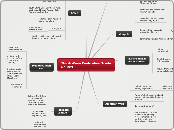によって Ben Woodberry 14年前.
1611
Third-Wave Civilization Trade Routes

Third-Wave Civilization Trade Routes
Hanseatic
League
trade with
Scandanavia
and Kiev Rus
timber, wax,
amber, resins,
fur, wheat, rye
Baltic to North Sea,
on the coast of
Northern Europe;
"merchant guilds";
13th-17th centuries
Mediterranean
Sea
wine was a
commodity
involved Arabs
(Muslim world)
and Byzantines
(Gaul, Iberia,
Moaghreb)
minimal trade
occurred before
fall of Rome
(476 CE)
called the
Mare Nostrum
IOMS
Swahili civilization; influenced
heavily by Bantu culture
Srivijaya
Major Buddhist
center in Asia
sailors seldom retained
ties to homeland
South China Sea, Southeast Asia,
west coast (India), Persian Gulf,
East Africa (Zanzibar)
"The Periplus of the
Erythrean Sea"
spices, aromatic resins,
pearls, Chinese pottery,
wine, ivory, porcelain, etc.
American Web
south-to-north diffusion
of maize, originating
in Mesoamerica; also a
north-to-south into
the Andean civilization
No "great traditions"
Panama's bottleneck inhibited
contact bettween North/South
America
limited interaction
among large areas
Mainyly Pochteca and
Cahokian trading
Trans-Saharan
Trade Routes
moved from cattle breeders
to horse&chariot, then camels
South Saharan
salt deposits
exchanged salt
for kola nuts and
palm oil
animal
domestication
Mongols
commerce between China and Persia
Genghis Khan supports
international trade
Pax Mongolica
Silk Roads
Spread of the Black Death,
Bubonic plague, etc.
connected the Middle East
with China/India
Chinese capital of
Chang'an (Tang)
Gandhara culture; Zhang Qian
is the father of the Road; defense
against the Xiongnu by alliance
with the Yuezhi
138 BCE - China
needs horses, trades
silk in return; mulberry
bushes are a limiting
resource for silkworms

